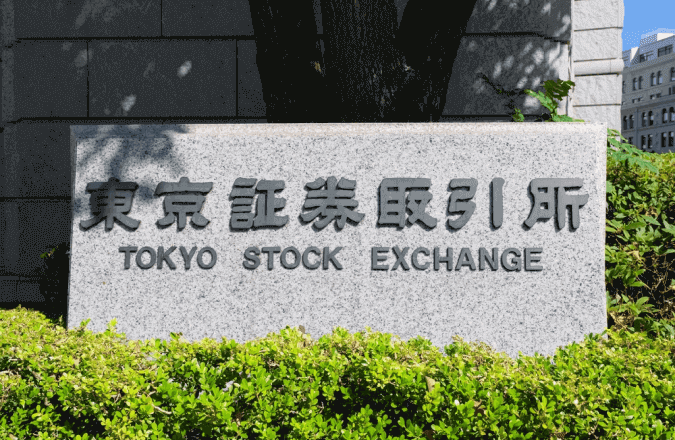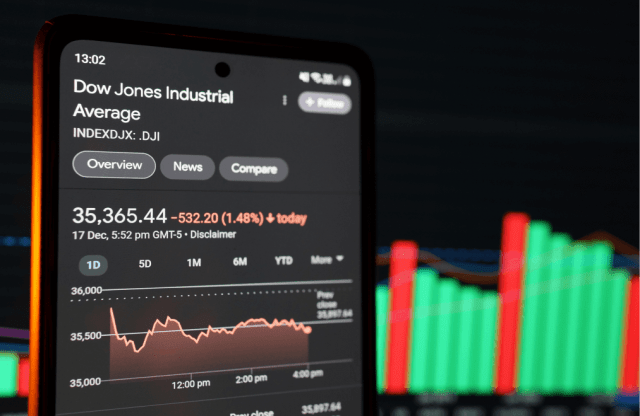A complete guide to trading the Japan 225

Learn all about the Japan 225 index, from its price journey to what moves its value, as well as the live Japan 225 share price.
What is the Japan 225?
The Japan 225 is a stock market index for the Tokyo Stock Exchange (TSE) in Japan. It is one of the most widely recognised and followed indices in the world for Japanese stocks. The index is composed of 225 top-rated companies listed on the TSE, representing a broad range of industry sectors.
The selection of companies in the Japan 225 is reviewed annually, and the index is weighted by price, meaning that the share price of each company affects the index in proportion to its price per share. This is different from other major indices, which are typically weighted by market capitalisation.
The Japan 225 is often used as a gauge for the overall health and performance of the Japanese stock market and the Japanese economy. It is similar to the Dow Jones Industrial Average in the United States in terms of its historical significance and its method of calculation.
What is the Japan 225 price history?
The Japan 225 was introduced on September 7, 1950, starting with a base value of 176.21. It was calculated and published by the Nihon Keizai Shimbun (Nikkei) newspaper. The index reflected Japan’s post-World War II economic recovery.
In the 1970s, Japan experienced rapid economic growth, becoming one of the largest global economies. This economic boom was mirrored by a strong performance in the Japan 225, driven by heavy industrialisation and high exports. The 1980s brought an asset price bubble, peaking at an all-time high of 38,957.44 on December 29, 1989. This was driven by extremely bullish market sentiment, speculative investments, and loose monetary policies.
In the 1990s the bubble burst, leading to a severe economic crisis in Japan. The Japan 225 dramatically declined, losing about 80% of its peak value over more than a decade. This period, known as the ‘lost decade’ saw prolonged economic stagnation.
In the early 2000s, the index continued to struggle with Japan’s economic challenges, including deflation and slow growth. Various economic policies and interventions were implemented to revive the economy. And in 2008, the global financial crisis caused significant drops in world markets, including the Japan 225, which fell sharply.
Under Prime Minister Shinzo Abe, Japan introduced a series of aggressive economic policies known as ‘Abenomics’, aiming to end deflation and stimulate growth. These policies, combined with global economic recovery trends, helped the Japan 225 to regain strength. The index saw substantial growth, reaching its highest levels since the early 1990s.
But the 2020s brought the Covid-19 pandemic, causing a sharp but brief drop in global markets, including the Japan 225. However, the index recovered quickly compared to other major indices, reflecting effective pandemic management and economic stimulus measures by the Japanese government.
Beyond that, the Japan 225 has continued to show resilience, with fluctuations driven by global economic conditions, trade policies, and domestic economic factors.
Past performance is not a reliable indicator of future results.
What factors might affect the performance of the Japan 225?
The performance of the Japan 225 may be impacted by a range of key fundamental events. Here are a few of the main factors:
-
Economic indicators: the health of Japan's economy is reflected in the Japan 225 price. Economic indicators like GDP growth rates reveal the country’s economic progress, influencing investor sentiment and, consequently, stock prices. Employment data acts as another barometer of economic health, with strong job growth signalling a robust economy and boosting market confidence. Similarly, consumer confidence measures how optimistic consumers feel about their financial situation and the state of the economy, affecting their spending behaviour and, indirectly, the stock market. Furthermore, as a major industrial powerhouse, Japan's industrial production levels offer insights into economic activity, with production levels often causing movements in the Japan 225.
-
Monetary policy: monetary policies set by the Bank of Japan, particularly interest rate decisions, are significant levers affecting the index. Lower interest rates reduce the cost of borrowing, encouraging investments and generally leading to rises in stock prices, while higher rates may assist price falls due to disposable income in the economy being affected. Similarly, actions like quantitative easing, which increase money supply and asset purchases, inject more capital into the economy, fostering investment and uplifting the stock market.
-
Global economic conditions: Japan's economy is significantly intertwined with global markets, especially given its status as a major exporter. Shifts in international trade dynamics, particularly with key trading partners like the USA and China, can sway the Japan 225. Global economic upheavals or financial crises often result in waves that crash across worldwide markets, including Japan, while economic booms can lift prices. Additionally, fluctuations in the value of the Japanese yen play a crucial role; a weaker yen can boost exporters' profits, positively affecting the stock market. Learn more about technical and fundamental drivers of assets on our market analysis page.
-
Political stability: the stability of Japan’s political landscape can either fortify or shake market confidence. Changes in government, policy shifts, or political unrest can lead to uncertainty, impacting economic policies and investor sentiment. Additionally, regional geopolitical events, including tensions with neighbours like North Korea or China, might induce market volatility, reflecting in movements of the Japan 225.
-
Industry trends/innovation: the performance of major sectors such as technology, automotive, and electronics – each strongly represented in the Japan 225 – directly impacts the index. Innovations that propel these industries forward can boost company stocks, uplifting the entire index.
-
Market sentiment: market sentiment, a reflection of the overall mood of investors, significantly impacts the stock prices. This sentiment can be swayed by news, media reports, analyst ratings, and economic forecasts. Positive news can lead to bullish markets, whereas negative news can cause declines. The interconnected nature of sentiment and market performance underscores the impact of psychological factors on financial markets.
Through this narrative, we can see how a blend of economic, political, and psychological factors continuously interact to influence the Japan 225's movements, painting a dynamic picture of its fluctuations.
What companies are in the Japan 225?
The Japan 225 comprises some of the most respected and advanced global businesses, such as financial giant SoftBank, electronics pioneer Sony, leading automobile manufacturers Honda and Toyota, and multi-industry conglomerate Hitachi. For a complete list of the companies that make up the index, see below. It’s important to note that the index composition is subject to change based on company performance, meaning the potential inclusion of new companies and the exclusion of previous constituents, as well as a reordering.
What are the Japan 225 stock market hours?
The Japan 225 stock market hours are based on the hours of the Tokyo Stock Exchange, which operates its regular trading session from 9:00am to 3:00am Japan Standard Time (JST). Japan is nine hours ahead of Coordinated Universal Time (UTC+9). For international traders looking to trade this market, it’s worth referring to the stock market hours page to see how global exchanges align with the hours you’re trading.
If you choose to trade CFDs, you can follow the Japan 225 performance live with the comprehensive Japan 225 price chart.
Monitoring the index’s activity can help you to keep an eye out for any key fundamental or technical events that may affect short-term movements in the price.
How to trade the Japan 225 with CFDs
If you want to take a position on the Japan 225, you have a choice of methods. First, you can trade a derivative product such as a contract for difference (CFD) on the stock market price using leverage. A CFD is a financial contract, typically between a broker and a trader, where one party agrees to pay the other the difference in the value of a security, between the opening and closing of the trade.
Using a CFD, you can either hold a long position (speculating that the Japan 225 price will rise) or a short position (speculating that it will fall). This is considered a short-term investment or trade, as CFDs tend to be used within shorter timeframes.
CFDs are traded on margin, which means that a trader can get exposure to larger positions with a relatively small outlay. This amplifies the potential profits, but also the potential losses, making leveraged trading risky. You can learn how to trade shares in our comprehensive guide to shares trading.
Aside from CFDs, you can also trade the Japan 225 through instruments like options, ETFs, and mutual funds. Options allow for speculative investment with controlled risk, ETFs enable straightforward stock-like trading of the index, and mutual funds offer a managed, buy-and-hold approach to tracking its performance. Each offers an alternative to the leveraged trading of CFDs, catering to different risk profiles and investment strategies.
Why trade index CFDs with Capital.com?
Trading index CFDs with Capital.com means you’ll enjoy an intuitive, easy-to-use platform, 24/7 support, fair and transparent pricing, along with award-winning education to help build your experience in the markets.* You can seamlessly integrate our smart platform with elite third-party software TradingView and MT4, and refine your strategies with our risk-free demo.
*Awarded best-in-class for education at ForexBrokers.com’s 2024 Annual Awards
FAQs
Why is the Japan 225 important to traders?
The Japan 225 can be used to monitor Japanese market conditions, allocate assets, and benchmark performance. Its prominence means it’s considered a bellwether for Japanese economic trends, with its movements watched closely by financial analysts, institutional investors, and policymakers.
What affects Japan 225 prices?
The Japan 225 index, which represents Japan’s top 225 companies by price weighting, is influenced by various factors like economic data, global economic conditions, sector-specific changes, and successes or failures of the largest, most influential stocks in the index.
What is the Japan 225?
The Japan 225 is the name of our tradeable CFD market on the Japan 225 index. The Japan 225 price you see with us tracks the price of the underlying Japan 225, enabling you to take a long or short position on the index.
Visit our other complete guides

How to trade France 40
